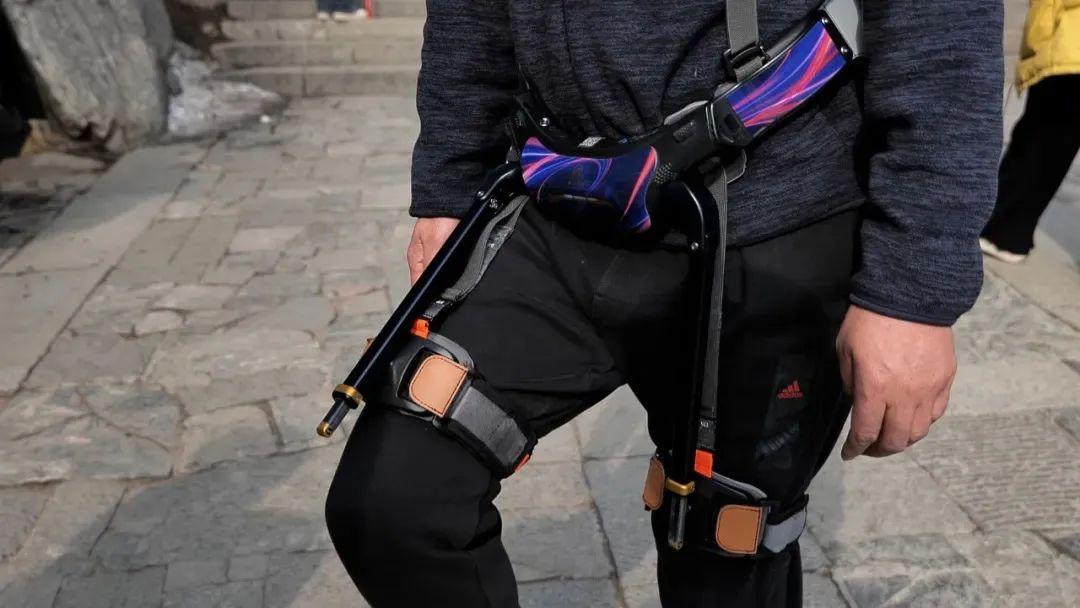Mount Taishan exoskeleton robot: a new experience of technology enabled mountaineering
Date:2025-06-13 15:30:59 Views:1384
Recently, exoskeleton robots in Mount Taishan Scenic Area have become the focus of attention due to the popularity of holiday rental. This "π" series of equipment developed by Shenzhen Kengen Technology was in short supply during the holiday, which not only made it easier to climb Mount Taishan Mountain, but also pushed the exoskeleton robot, a cutting-edge technology, to the public again.

Image source: Guangming Net
This mountaineering exoskeleton robot, named VIGX, is made of lightweight carbon fiber and weighs only 1.2 kilograms, but can withstand up to 200 kilograms of instantaneous tension. Its appearance conforms to the curves of the human body, connected to the legs through biomimetic joints, and when worn, it looks like an invisible "mechanical leg". The device is equipped with an eight hour long-lasting battery, which can support tourists to complete the entire climb from the foot of the mountain to the top of the mountain on a single charge. Even more considerate is that it is not only a power amplifier, but also has comprehensive service functions such as emergency call and scenic spot voice explanation, becoming a mobile security station for tourists.
The core technology of exoskeleton robots lies in a sharp "perception decision execution" system. When the user takes a step, pressure sensors and inertial navigation modules distributed at the joints will capture real-time data such as muscle force state, stride frequency, and terrain slope. These pieces of information are instantly transmitted to the built-in AI chip, which analyzes the motion intention through machine learning algorithms and drives the motor to output precise assistance at key action nodes. Especially when climbing steep eighteen levels, the system will automatically enhance the knee joint lifting force, saving up to 50% of physical energy consumption, making the dangerous sections that originally required both hands and feet easier to walk.
The technological breakthrough of exoskeleton robots is not only reflected in their intelligent working principles, but also in the integration of their four core technologies. Firstly, the application of lightweight materials. The use of carbon fiber composite materials reduces the weight of equipment by 40% compared to earlier products, while ensuring the strength and durability of the structure. Next is energy cycling technology, where the gravitational potential energy is recovered and converted into electrical energy through damping devices when going downhill, further extending the endurance of the equipment. Furthermore, there is an optimization of human-computer interaction. Through the fusion of multimodal sensors, the device can recognize various scenarios such as walking on flat ground and climbing stairs, and automatically switch power modes to provide a more personalized assistance experience. Finally, there is personalized adaptation technology, based on cloud based gait databases, where devices can learn users' usage habits and achieve an intelligent experience of "more fitting with more use".
The emergence of exoskeleton robots not only brings good news to mountaineering enthusiasts, but also demonstrates broad application prospects in multiple fields. In the field of medical rehabilitation, it can assist patients with stroke, spinal cord injury, etc. in restoring their walking ability and improving their quality of life. In the industrial field, it can reduce the burden on workers' lumbar spine, improve work efficiency, and lower the risk of work-related injuries. In the military and emergency fields, it can enhance the load-bearing capacity of soldiers and assist firefighters in carrying out rescue operations in complex environments. In the field of tourism, the successful pilot project of Mount Taishan Scenic Spot has undoubtedly opened a good beginning for the popularization of exoskeleton robots, which not only improves the mountaineering experience of tourists, but also promotes the upgrading of tourism industry and the deep integration of science and technology with cultural tourism.




 Weixin Service
Weixin Service

 DouYin
DouYin
 KuaiShou
KuaiShou





















